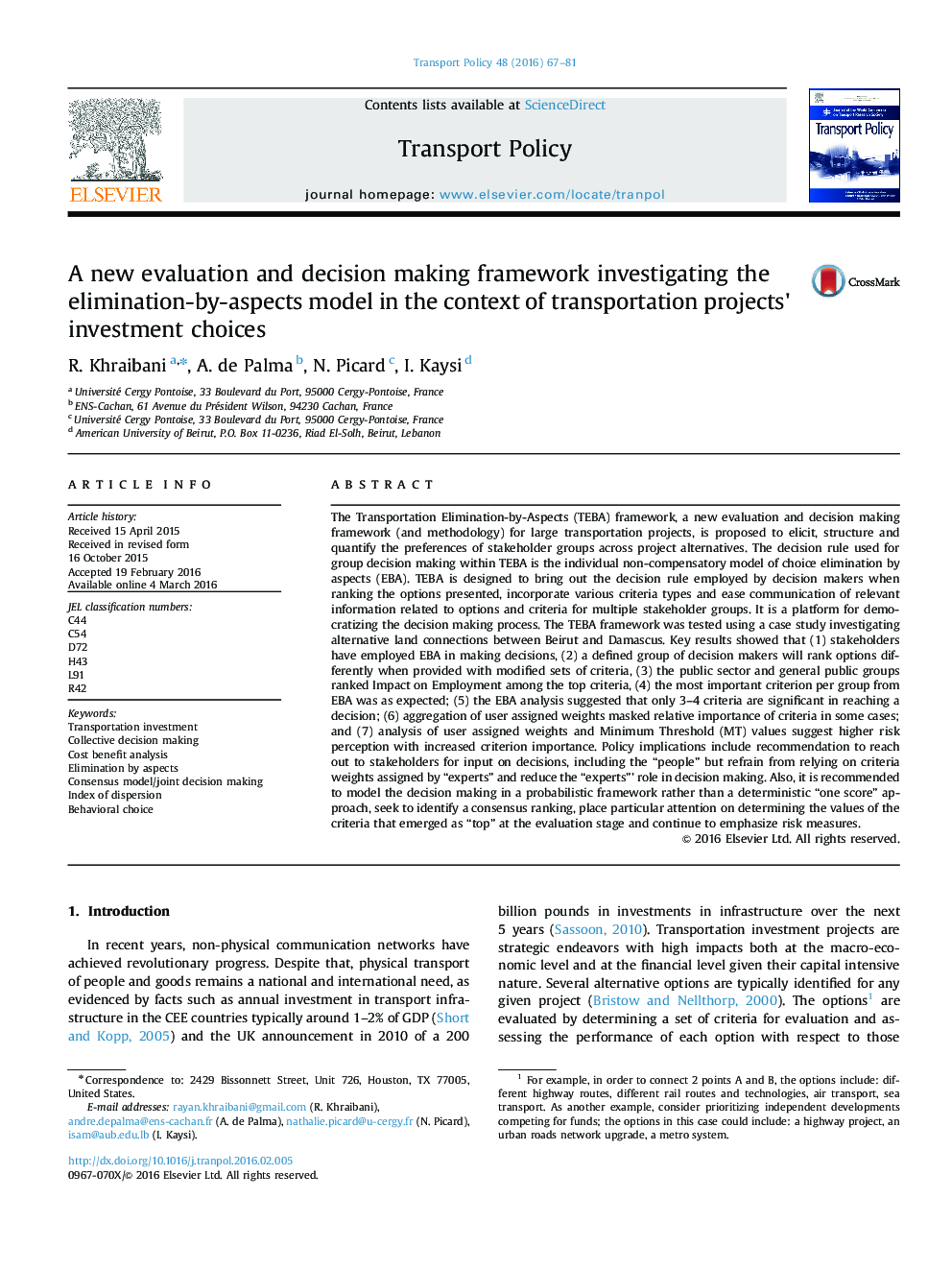| کد مقاله | کد نشریه | سال انتشار | مقاله انگلیسی | نسخه تمام متن |
|---|---|---|---|---|
| 1064715 | 1485829 | 2016 | 15 صفحه PDF | دانلود رایگان |
• Used a non-compensatory probabilistic model for transportation investments decisions.
• We propose and test new methodology for eliciting and aggregating preferences.
• We investigate views of three stakeholder groups.
• It is highly likely that stakeholders in case study employed EBA in making decisions.
• Used EBA model and deterministic rankings for “consensus” amongst stakeholders.
The Transportation Elimination-by-Aspects (TEBA) framework, a new evaluation and decision making framework (and methodology) for large transportation projects, is proposed to elicit, structure and quantify the preferences of stakeholder groups across project alternatives. The decision rule used for group decision making within TEBA is the individual non-compensatory model of choice elimination by aspects (EBA). TEBA is designed to bring out the decision rule employed by decision makers when ranking the options presented, incorporate various criteria types and ease communication of relevant information related to options and criteria for multiple stakeholder groups. It is a platform for democratizing the decision making process. The TEBA framework was tested using a case study investigating alternative land connections between Beirut and Damascus. Key results showed that (1) stakeholders have employed EBA in making decisions, (2) a defined group of decision makers will rank options differently when provided with modified sets of criteria, (3) the public sector and general public groups ranked Impact on Employment among the top criteria, (4) the most important criterion per group from EBA was as expected; (5) the EBA analysis suggested that only 3–4 criteria are significant in reaching a decision; (6) aggregation of user assigned weights masked relative importance of criteria in some cases; and (7) analysis of user assigned weights and Minimum Threshold (MT) values suggest higher risk perception with increased criterion importance. Policy implications include recommendation to reach out to stakeholders for input on decisions, including the “people” but refrain from relying on criteria weights assigned by “experts” and reduce the “experts”’ role in decision making. Also, it is recommended to model the decision making in a probabilistic framework rather than a deterministic “one score” approach, seek to identify a consensus ranking, place particular attention on determining the values of the criteria that emerged as “top” at the evaluation stage and continue to emphasize risk measures.
Journal: Transport Policy - Volume 48, May 2016, Pages 67–81
